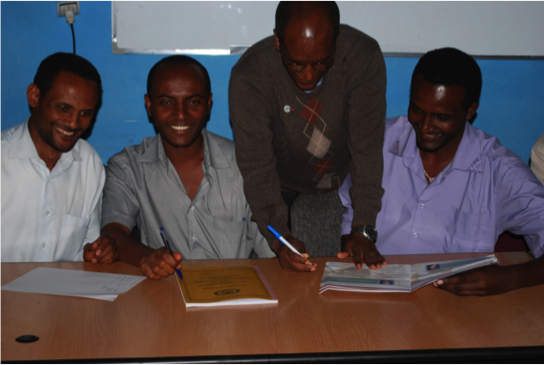By Ally Sterman
Student, Ohio State College of Veterinary Medicine
Addis is quite the interesting city full of vibrant city life, u-turns (that aren’t quite legal), coffee shops on every corner, and all the history and  museums you could wish for. Upon our arrival to Addis from Gondar there were a few food items that we were greatly missing. The majority of our previous stay in Gondar was during the fasting season which means no animal products. At a local coffee shop where we stopped for lunch we also stopped for ice cream. This local coffee shop had a very recognizable logo. Upon first glance, we all did a double take to check the name. The sign here is very reminiscent of a similar coffee shop that is also located on every street corner in the U.S.– Starbucks. We felt quite at home here, both the coffee and ice cream were delicious.
museums you could wish for. Upon our arrival to Addis from Gondar there were a few food items that we were greatly missing. The majority of our previous stay in Gondar was during the fasting season which means no animal products. At a local coffee shop where we stopped for lunch we also stopped for ice cream. This local coffee shop had a very recognizable logo. Upon first glance, we all did a double take to check the name. The sign here is very reminiscent of a similar coffee shop that is also located on every street corner in the U.S.– Starbucks. We felt quite at home here, both the coffee and ice cream were delicious.

After our conference we had two days to explore the city. We all supported the Ethiopian economy during our shopping trip down the busy streets of the market. Street vendors were selling everything you could want including both more traditional and less traditional items. That night we went to a local traditional dance club again with some of the OSU professors here for the conference. We were all able to indulge in a local favorite, tej. It is a honey mead made here in Ethiopia. It is served in a special flask called berele. If you didn’t know, you would think you were being served some form of science experiment because the flask looks like something out of a chemistry lab and the tej is an off orange color.
But Addis wasn’t all eating, dancing and shopping. We took the time to visit both Addis Ababa University Museum and the National Museum. At the AAU museum we had the opportunity to see and learn quite a bit about the history of Ethiopia including various traditional medicines used, various tribes and lifestyles present in Ethiopia. There was also a section dedicated to the discovery of coffee and traditional coffee ceremony here in Ethiopia. Another room that particularly caught my eye was the room on musical instruments and their collection of them. We traveled to the National Museum second. The highlight exhibit here was Lucy.

Lucy was discovered in Ethiopia, in Awash valley in 1974. She is thought to be around 3.2 million years old and one of the first bipedal hominid. Seeing her ( both in the standing statue pieces and separate pieces kept apart from the standing statue) was a once in a lifetime chance. Lucy had been in the US for about 6 years but having the chance to see her while in Ethiopia where it is said that humans first lived was a wonderful opportunity.

